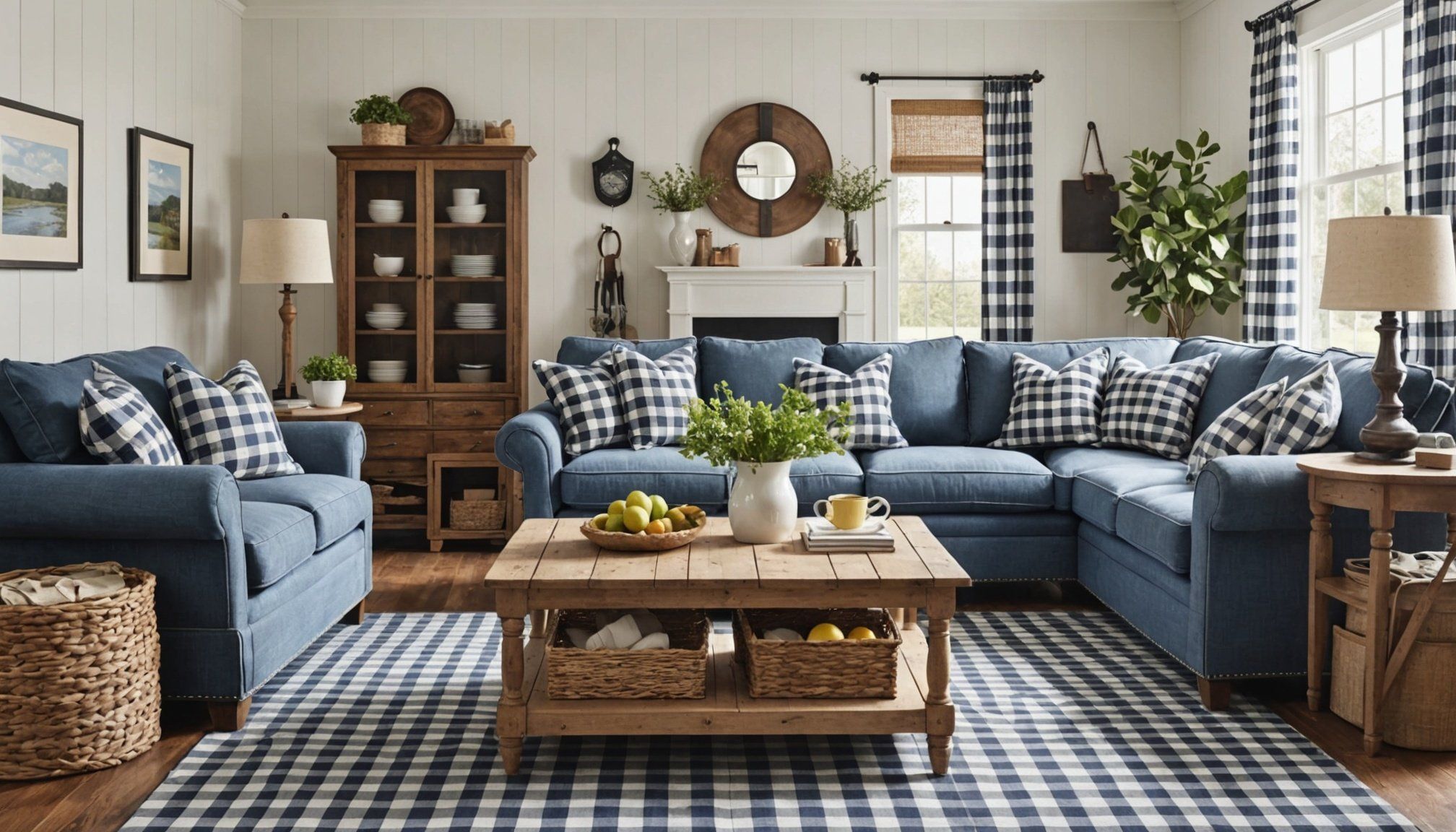Understanding the Trendy Farmhouse Style
Farmhouse decor has taken the world of home design by storm, captivating many with its blend of rustic charm and modern sensibilities. The core of the trendy farmhouse style lies in its warm and inviting elements that provide a sense of nostalgia, reflecting the simplicity and functionality of country living. This style incorporates natural materials such as wood and stone, emphasising craftsmanship and durability.
Key features defining the farmhouse decor aesthetic include a neutral colour palette with whites, beiges, and soft pastel hues, which create a serene backdrop for other design elements. These colours are complemented by cosy textures like chunky knit blankets and linen fabrics, adding depth and interest.
Also read : Ultimate denim discovery: your complete guide to choosing the ideal jeans for every body shape
Popular influences contributing to the rise of the trendy farmhouse style stem from cultural elements like antique finds and heirloom pieces. These reflective pieces add character to spaces, making them feel timeless and personalised. Additionally, the influence of sustainability trends appeals to those who value environmentally friendly and resourceful design choices.
Incorporating farmhouse decor into home design can transform environments, offering a welcoming retreat where charm meets practicality. By understanding its elements, one can create spaces that feel both stylish and authentically comforting.
Also to discover : Transform your nighttime style: how to style a brocade vest for sophistication in edinburgh
Blending Gingham and Denim Fabrics
Incorporating gingham and denim into farmhouse decor offers a timeless and rustic charm that appeals to many. The classic gingham pattern has roots dating back to the mid-18th century and has been cherished for its straightforward, yet elegant style. Meanwhile, denim, originally known for its durability, has become a staple in both fashion and home decor for its versatility.
Techniques for Mix-and-Match
Successfully mixing gingham and denim involves balancing patterns and textures to achieve a cohesive look. One approach is to use gingham as an accent, such as in cushions or table linens, while allowing denim to take on larger surfaces like sofas or armchairs. This technique not only prevents overwhelming the space but also highlights each fabric’s unique qualities.
Color Palette Considerations
When blending these two fabrics, careful attention to colour palettes is essential. Neutral shades, such as whites and greys, often serve as the canvas, allowing gingham and denim to stand out without clashing. For a warmer atmosphere, consider integrating earth tones like deep browns or muted reds, which can harmonise with the gingham’s crisp lines and denim’s classic blue.
Ensuring a balance in both technique and colour palette can seamlessly integrate gingham and denim, offering a refreshed yet classic aesthetic to your home’s decor.
Practical Tips for Incorporation
Integrating farmhouse style into your home can be a rewarding home improvement project, offering warmth and charm.
Furniture Choices
The selection of furniture plays a pivotal role in creating a cohesive farmhouse style. Opt for furniture pieces that seamlessly blend with gingham and denim textiles. Wooden furniture with distressed finishes often complements these materials beautifully. For instance, pairing a rustic wooden table with denim upholstered chairs can create an inviting atmosphere.
Success stories include utilizing vintage pieces that naturally exhibit the wear and charm associated with farmhouse decor. When considering finishes, natural wood tones and muted colors predispose to a harmonized look. Earthy hues and pastel accents often work best, enhancing the serene yet cozy feel typical of a farmhouse setting.
Textiles and Accessories
Incorporating textiles such as curtains, cushions, and throws in gingham and denim can amplify the farmhouse theme. Layering is key; mix and match patterns for depth and interest. For example, combining gingham plaid cushions with solid denim throws on a sofa can add a stylish touch.
Consider using accessories like vintage clocks, mason jars, or wicker baskets, which enhance the visual appeal without overwhelming the space. These elements should complement the overall color scheme, maintaining a balance between rustic charm and modern comfort.
Visual Inspiration and Style Examples
Farmhouse interiors embody a charming blend of rustic charm and modern comfort. They often incorporate elements like gingham and denim, which are staples in this style. If you’re looking for decor inspiration, consider exploring a gallery of images that showcase successful blends of these materials. These images offer a visual feast of design examples where old-world charm meets contemporary elegance.
A visual breakdown of effective layouts is crucial in understanding how to balance these elements effectively. In farmhouse interiors, elements like weathered woods, neutral palettes, and mixed textures contribute to a cohesive look. By examining these layouts, you can gain insights into creating a harmonious space that resonates with personal style and comfort.
Case studies of homes that have embraced the trendy farmhouse style provide practical insight and detailed examples. They illustrate how elements like open shelving, exposed beams, and vintage fixtures can be combined to achieve a warm, inviting atmosphere. By analyzing these homes, one can discern which elements are crucial to creating a signature farmhouse aesthetic. Each home tells a story, serving as a valuable resource for personalised decor inspiration.
Implementing Your Design Ideas
Transforming your living space with a DIY farmhouse-style project can be both rewarding and cost-effective. Start by selecting a key piece to focus on, such as a reclaimed wood coffee table or a vintage hutch. Choosing the right materials is crucial for achieving an authentic look; consider using second-hand stores, online marketplaces, or salvage yards to find budget-friendly materials. Doors and furniture with a distressed finish add charm and character.
Step-by-Step Guide
-
Plan your project: Begin with a clear vision. Sketch your ideas or use design software to visualise the space.
-
Gather materials: Sourcing decor items and materials within tight budgets is possible by exploring community swaps, thrift shops, and online sales.
-
Execute your plan: Set aside dedicated time for your DIY tasks. Break down tasks over several weekends to avoid feeling overwhelmed.
Learning Resources
For those new to home styling, workshops can be invaluable. Many local community centres offer hands-on classes, while online platforms provide excellent tutorials and support. Websites like YouTube or Pinterest offer countless inspirations and step-by-step guides for farmhouse projects. Tap into these resources to build confidence and skills in decor implementation.










